Nothing Phone (3a) Pro vs Apple iPhone 16e: Differences explained
We may earn a commission if you make a purchase from the links on this page.

Intro
Affordable phones are getting much better in 2025, and these two are among the best you can buy.
The iPhone 16e is the big newcomer, bringing Apple Intelligence to a $600 price point and with the latest, super powerful A18 chip on board. But it's a small phone and only has one camera on its back.
Then comes the Nothing Phone (3a) Pro. At $460, it's significantly cheaper and it brings a much bigger display, with three cameras on its back, including a periscope zoom one, and it also has fast charging.
Which one should you go for?
Nothing Phone (3a) Pro vs iPhone 16e differences explained:
| Nothing Phone (3a) Pro | iPhone 16e |
|---|---|
| Much bigger size: | Compact size: |
| Significantly heavier: | Weighs less: |
| Bigger, 6.8-inch OLED screen | 6.1-inch OLED screen |
| 120 Hz | 60 Hz refresh rate |
| Screen gets much brighter | Dimmer screen |
| More storage and RAM: 12/256 GB for $460 | More expensive, less RAM: 8/128 GB for $600 |
| 5,000mAh battery | 4,005 mAh battery |
| 50 W wired charging | 20 W wired charging |
| No wireless charging | Slow 7.5 W wireless charging (but no MagSafe) |
Table of Contents:
Design and Display Quality
Do you prefer a big or a small phone?
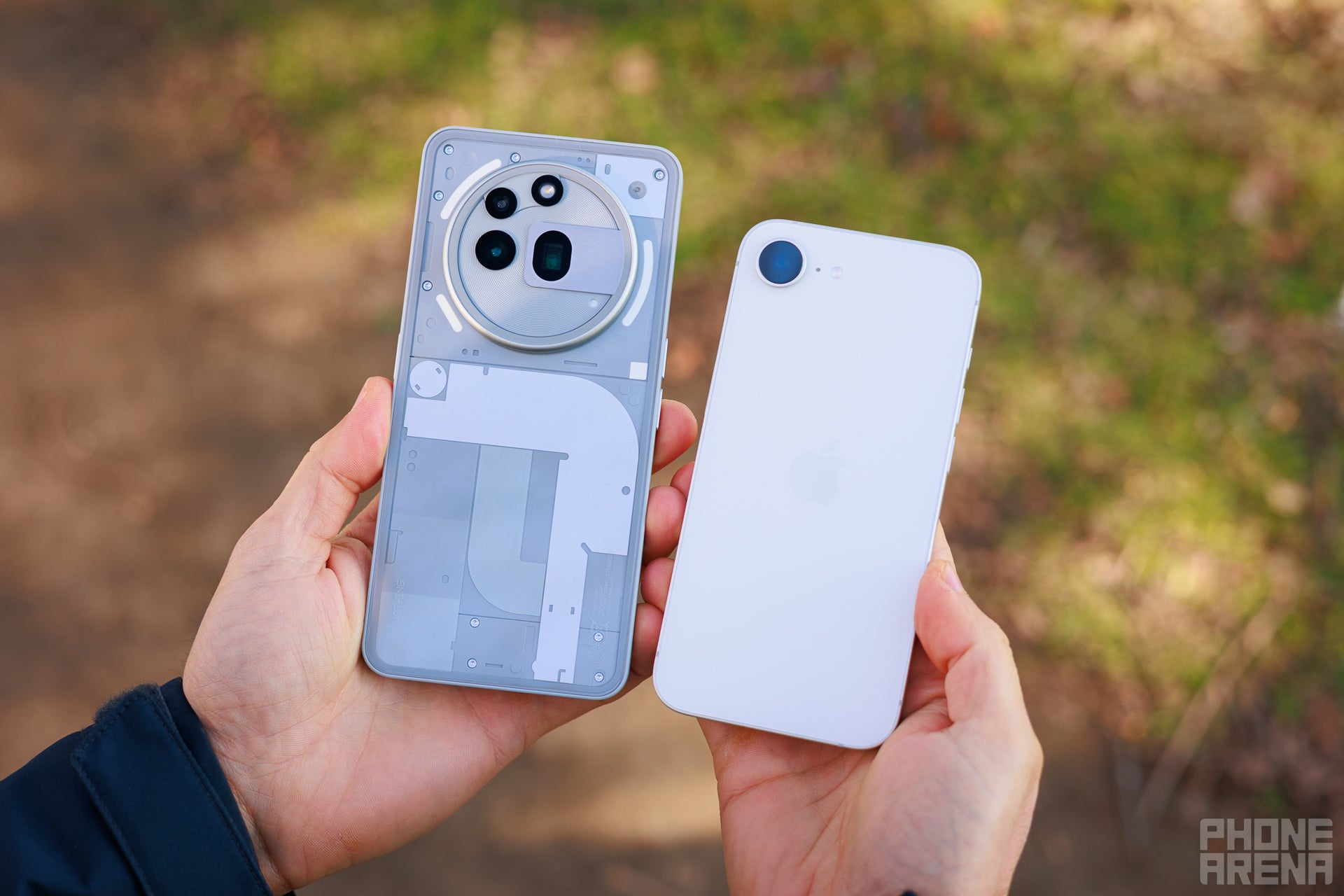
The Nothing phone has that fancy look and the LED light show (Image by PhoneArena)
The biggest difference between the (3a) Pro and the iPhone 16e is just the sheer size of the two. The Nothing is a big and heavier phone, while the iPhone is compact and weighs very little.
Unfortunately, you do not have a smaller version of the Nothing or a larger version of the 16e.
What else is different? Well, you have your standard power and volume buttons on both, but the iPhone adds a customizable Action button, while Nothing experiments with the so called Essential key, positioned below the power button. This is a strange addition. It opens something called the Essential Space, which is basically like a journal that aggregates all of your screenshots with a quick comment about each of them. It also uses AI to extract important text or other information from those screenshots. It's a neat idea, but we are not sure everyone will like it. You will also accidentally press the Essential key instead of the power button many times.
In terms of materials, both use a glass back, but the iPhone has IP68 water and dust protection, while the Nothing has IP64, meaning it should not be submerged in water.
And of course, you have the design difference. The iPhone has a minimalist design a matte back and the Apple logo, while the Nothing phone has its fancy transparent back.
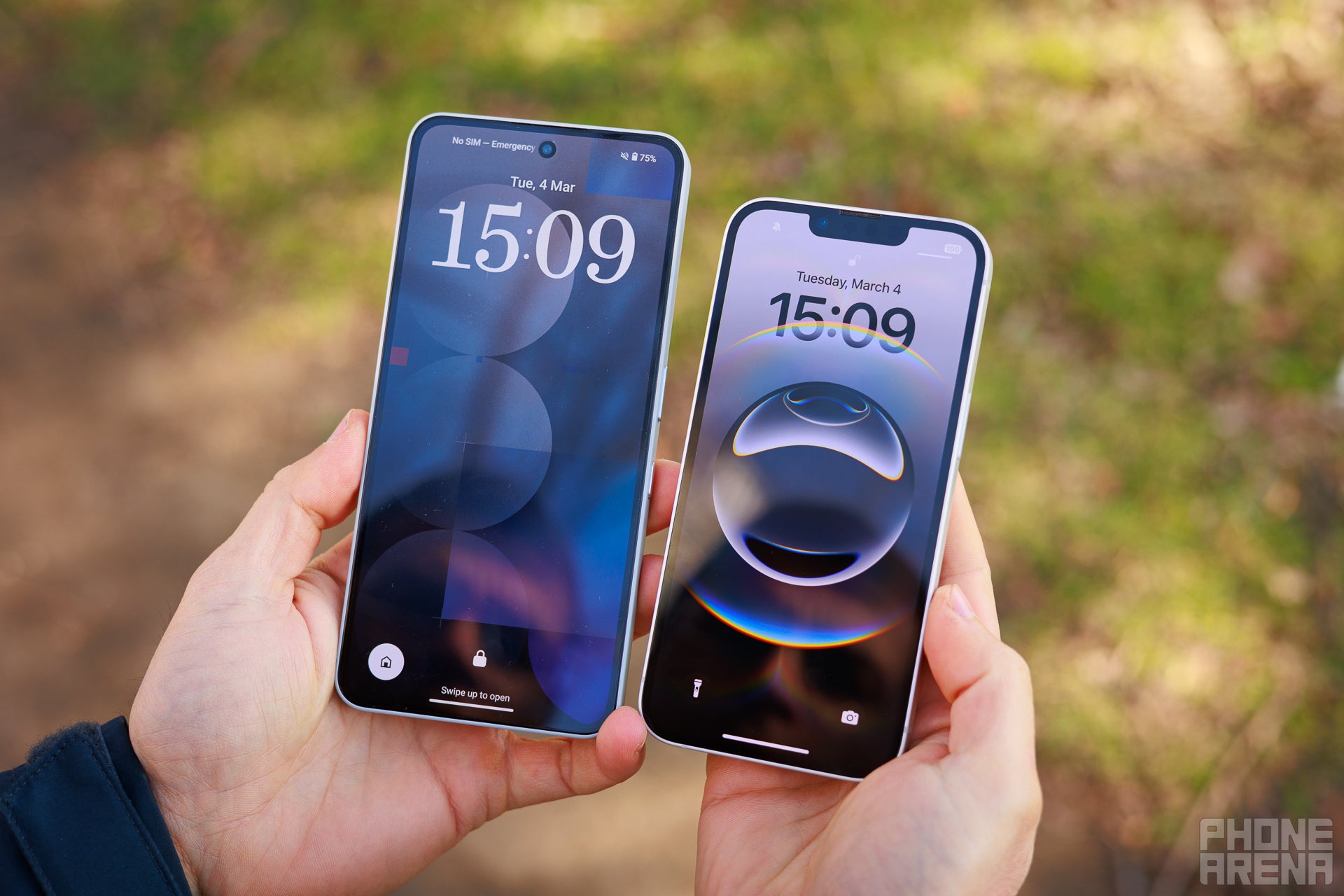
The Nothing phone gets significantly brighter (Image by PhoneArena)
With a 6.8-inch screen, the (3a) Pro has a lot more real estate compared to the 6.1-inch display on the iPhone.
We also measured it gets much brighter, so it's easier to use outdoors.
However, its biggest advantage is the support for 120 HZ refresh rate, while the iPhone only runs at a 60 Hz refresh rate, making swiping look a bit choppy.
Performance and Software
The iPhone has a faster chip, but Nothing has something better
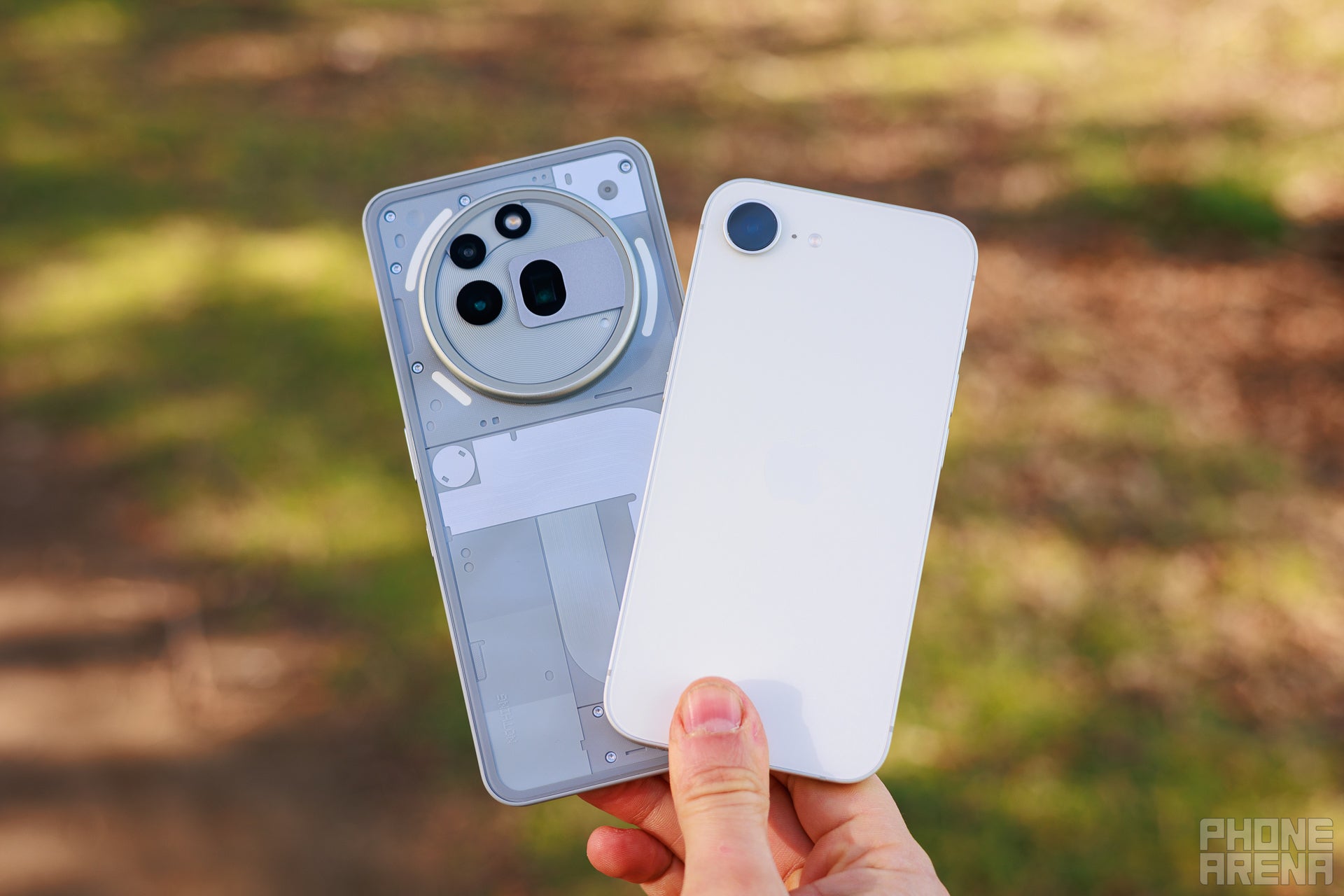
Having a fast refresh rate is great on the Nothing phone (Image by PhoneArena)
With an A18 chip inside, the iPhone 16e has one big advantage on paper. The Nothing phone relies on a much more modest Snapdragon 7s Gen 3 chip.
Let's take a look at the benchmarks before making one important note.
With nearly 3X faster performance, the iPhone 16e smokes the Nothing Phone (3a) Pro, and you can see the power of that A18 chip in action.
CPU Performance Benchmarks:
With nearly 3X faster performance, the iPhone 16e smokes the Nothing Phone (3a) Pro, and you can see the power of that A18 chip in action.
GPU Performance:
The iPhone continues its dominant performance in gaming benchmarks too. Even after 20 minutes of intense gaming, it still finishes at 2.5X times the frame rate and performance of the (3a) Pro. The iPhone is just the better phone for gamers, full stop.
Despite all of those big numbers for the iPhone, we have to say that in daily use, the Nothing Phone is incredibly well optimized and since it has 120 Hz refresh rate, it appears much smoother when you just scroll around. We rarely saw the (3a) Pro stutter, really impressive.
You should only care about the faster processor on the iPhone for the most intense of tasks, but in daily use, the refresh rate actually makes a bigger impression if you ask us.
The Nothing Phone (3a) Pro is also offered with a much more generous configuration with 12 GB of RAM and 256 GB of storage for the base model at a price of $460. The base iPhone 16e has 8 GB RAM and 128 GB storage for $600, and if you want to step up to 256 GB of storage to match the (3a) Pro, you are looking at $700. That's pricey!
Camera
Don't focus on the number of cameras alone
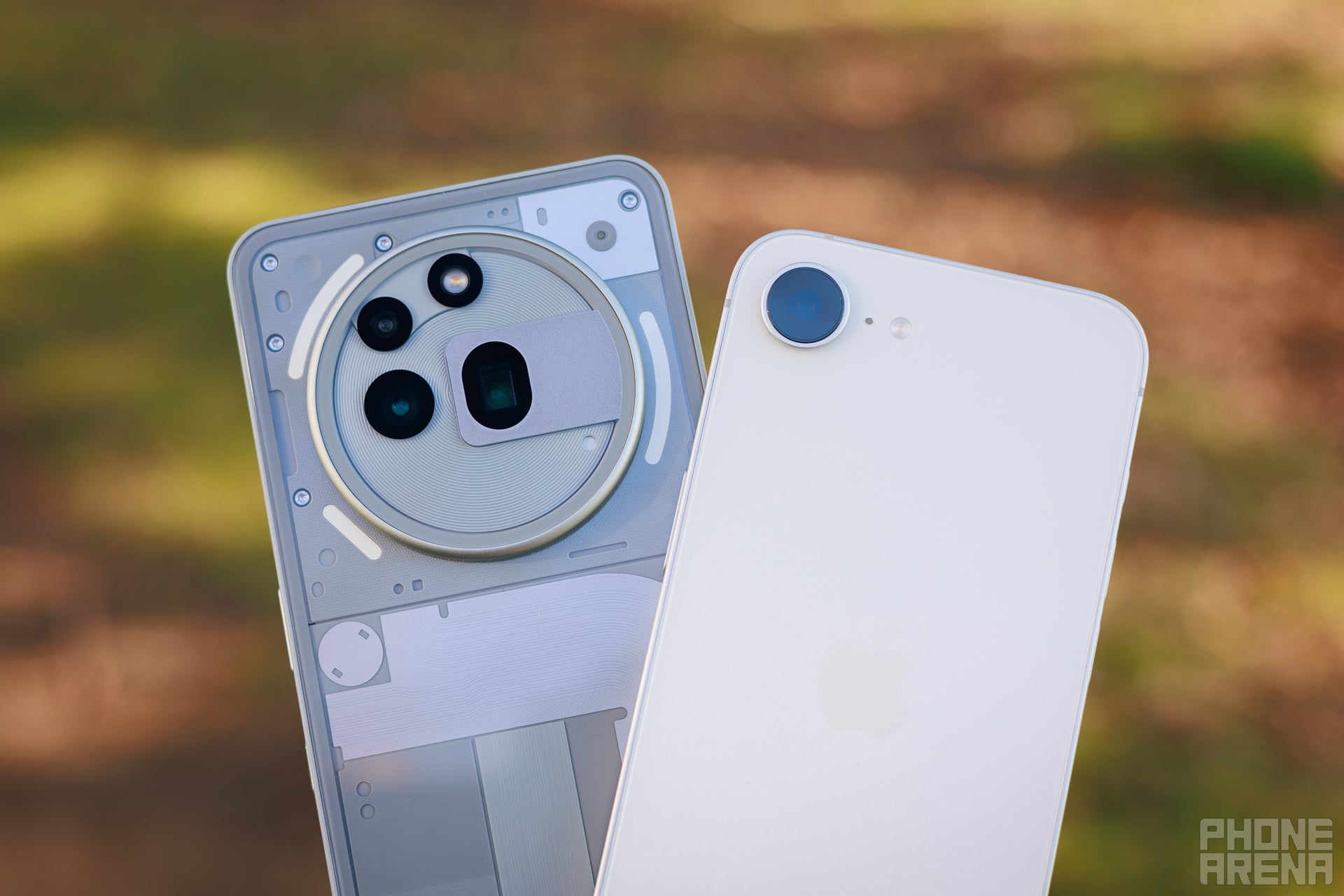
It's surprising how good one camera can be (Image by PhoneArena)
The single camera on the iPhone 16e definitely goes in the category of "brave" decisions by Apple.
And at least on paper, it would seem obvious that the Nothing Phone (3a) Pro is the more capable camera, with three lenses on the back, including a periscope zoom one.
In our camera score, the (3a) Pro outscores the iPhone big time because of that versatility, but if you only stick with the main camera, the difference between these two is not that huge, and the iPhone is able to give you surprisingly good detail when zooming in.
The main difference between the (3a) Pro and iPhone 16e photos is in the colors with slightly colder tonalities on the (3a) Pro, while the iPhone tends to favor slightly warmer tones and skin tones.
PhoneArena Camera Score:
In our camera score, the (3a) Pro outscores the iPhone big time because of that versatility, but if you only stick with the main camera, the difference between these two is not that huge, and the iPhone is able to give you surprisingly good detail when zooming in.
Camera Samples
The main difference between the (3a) Pro and iPhone 16e photos is in the colors with slightly colder tonalities on the (3a) Pro, while the iPhone tends to favor slightly warmer tones and skin tones.
That's a stylistic difference though, and the (3a) Pro has the advantage of a zoom lens, so it captures cleaner-looking images when zooming far away.
It also has an ultra-wide camera, which you don't get on the iPhone.

The Nothing definitely has a few limitations with video recording, the biggest one being that it cannot record in 4K60, while the iPhone can.
Video Quality

The Nothing definitely has a few limitations with video recording, the biggest one being that it cannot record in 4K60, while the iPhone can.
However, it has more cameras on board, so it is more versatile. Unfortunately, the ultra-wide camera on the (3a) Pro is not available for 4K video recording, it can only be used in 1080p quality.
With that in mind, the footage is actually not too different, but the iPhone has a slight advantage with video stabilization and a bigger advantage with clarity. Interestingly, despite the Nothing phone having a telephoto camera, we found that the iPhone produces better quality footage, so kudos to Apple for doing such a great job with just one camera.
Battery Life and Charging
The iPhone can stand its ground for battery life

The Nothing phone has a number of advantages (Image by PhoneArena)
You only expect a much bigger phone like the (3a) Pro to last a lot longer than the compact iPhone 16e.
First, the battery sizes: the (3a) Pro features a 5,000 mAh battery, while the 16e sports a 4,005 mAh one. That might seem like a big difference in favor of the Nothing phone, but you probably know that OS optimizations matter a great deal, and the iPhone is particularly efficient in stand by.
Let's look at our in-house battery tests for a fuller picture.
PhoneArena Battery and Charging Test Results:
The iPhone 16e scores 6 hours and 4 minutes of screen time, while the Nothing gets nearly 6 hours and 40 minutes, so it indeed lasts longer, but not by a huge margin.
The (3a) Pro does poorly in our web browsing test, scoring only 13 hours, while the iPhone lasts nearly 17 hours and a half. But then, in YouTube video streaming, the (3a) Pro lasts for nearly 10 hours and a half compared to 7 hours on the iPhone.
As you can see, those are big differences, so your battery life will depend a lot on how you use your phone.
For charging, the Nothing has a big lead with 50 W wired charging speeds compared to just 20 W on the iPhone.
You get nearly 70% battery back in 30 minutes on the Nothing, while the iPhone only gets 47% charge in 30 minutes. A full charge on the Nothing takes 56 minutes, while the iPhone takes nearly twice as long at 1 hour and 41 minutes.
One compromise with the (3a) Pro is that it does NOT support wireless charging at all. The iPhone 16e has wireless charging, but does not have the magnets for MagSafe, so it is very slow, running at 7.5 W speeds, but at least it has the option.
Audio Quality and Haptics
Bigger phones typically have louder, boomier sound and the Nothing Phone (3a) Pro follows that rule. It gets louder than the iPhone 16e, but we cannot say that the quality is necessarily better.
Sound quality on the iPhone is better controlled and has a bit more depth to it, while the Nothing can have a slightly piercing tonality at maximum volume and less depth. It's a toss-up between the two.
There is no 3.5mm headphone jack on either of these.
We were also pleasantly surprised by the sharp haptics on the (3a) Pro, which are about just as good as the Taptic Engine on the iPhone. That's high praise for a mid-range Android phone.
Which one should you buy?
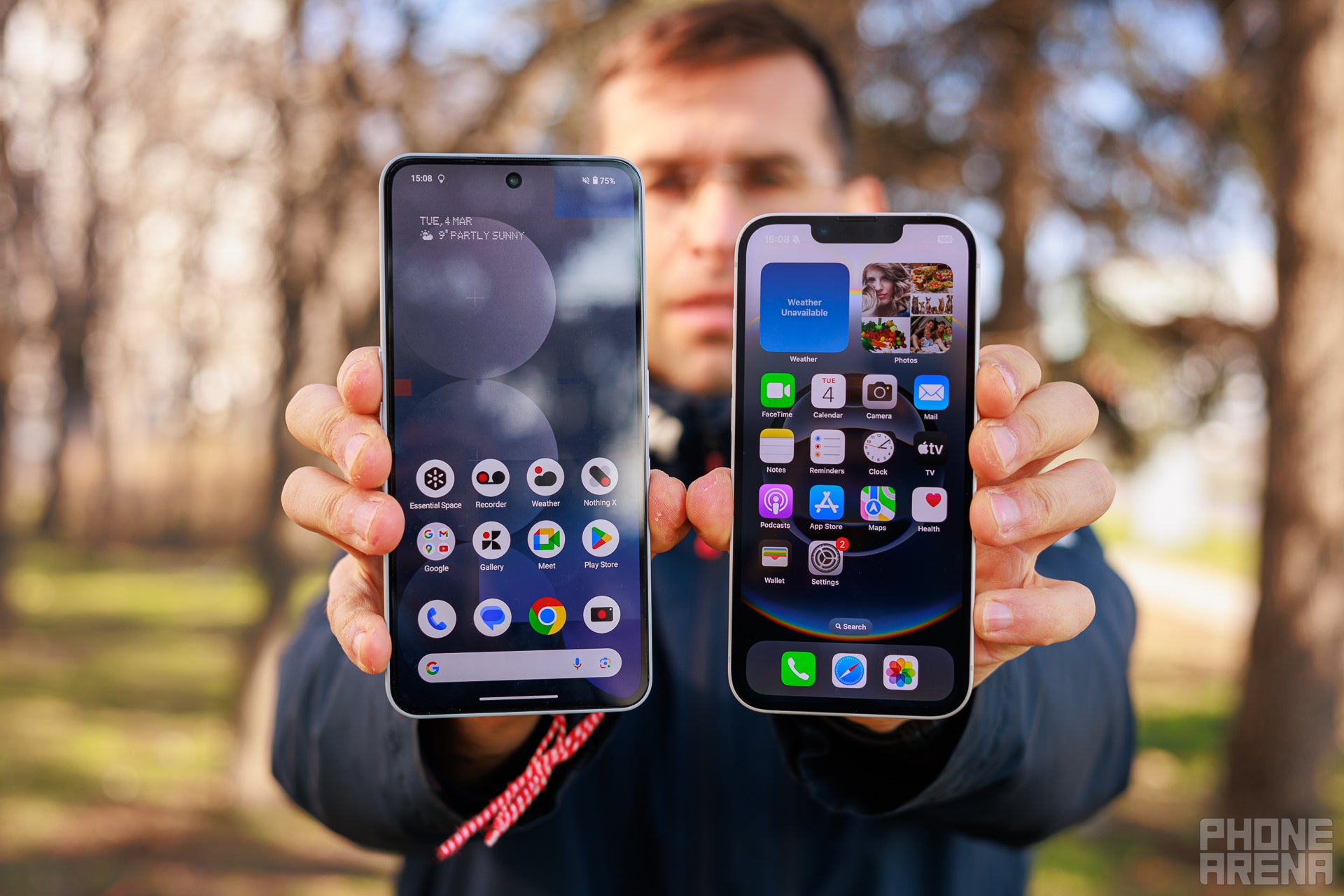
The choice is mostly about size though (Image by PhoneArena)
We came away impressed with the Nothing Phone (3a) Pro. It's great value and thanks to the clever optimizations to the interface, you don't even notice that it runs on a slower chipset. And even the cameras seem to be matching the iPhone and you get more versatility with an ultra-wide and telephoto snappers. If you are looking for the better deal, the Nothing phone is just that.
The iPhone, however, still has its advantages. Go for it if you want something more compact, but it's also great for video recording and Apple gives you longer software support. We are, however, disappointed with the 60 Hz refresh rate, and if you care about smooth performance, you will be too.
Which one would you pick and why?
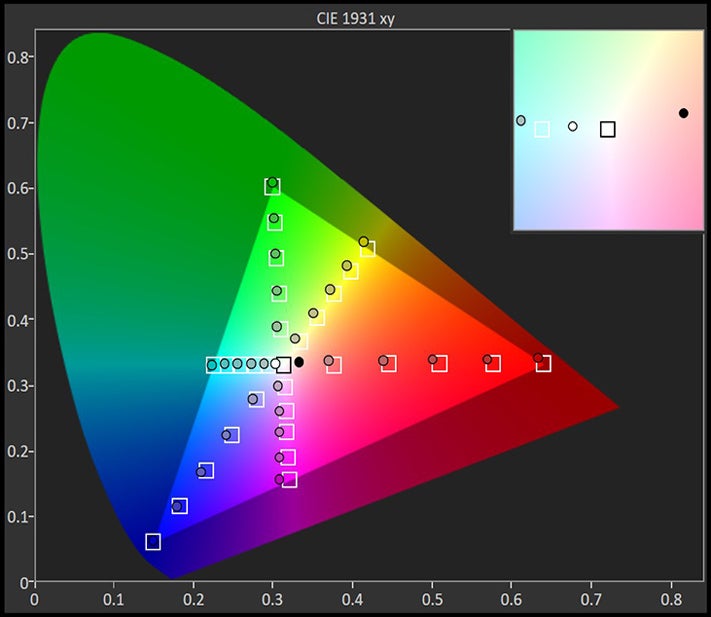






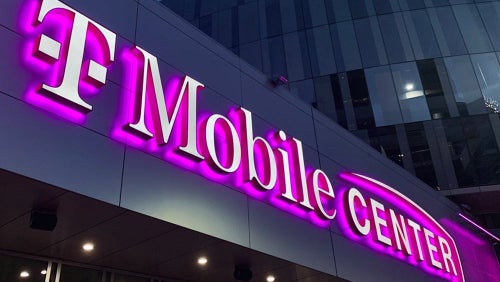

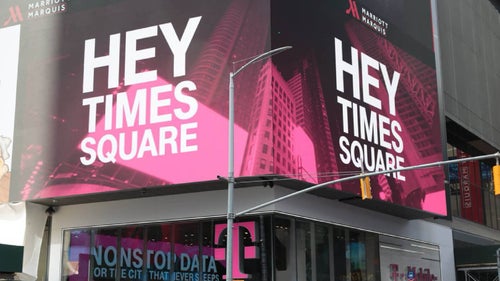
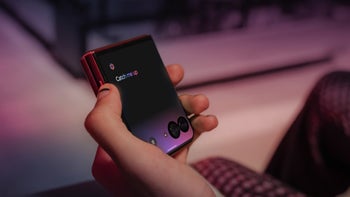
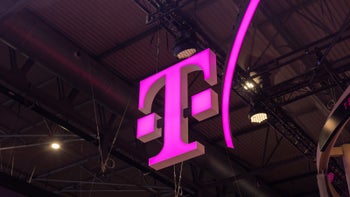
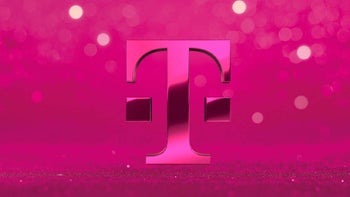
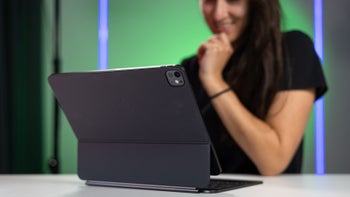
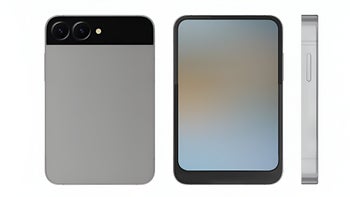
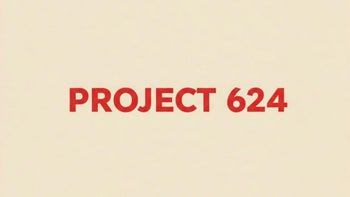






Things that are NOT allowed: